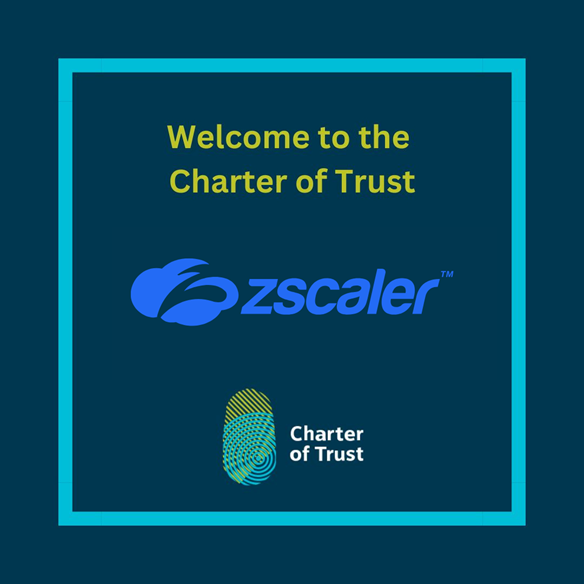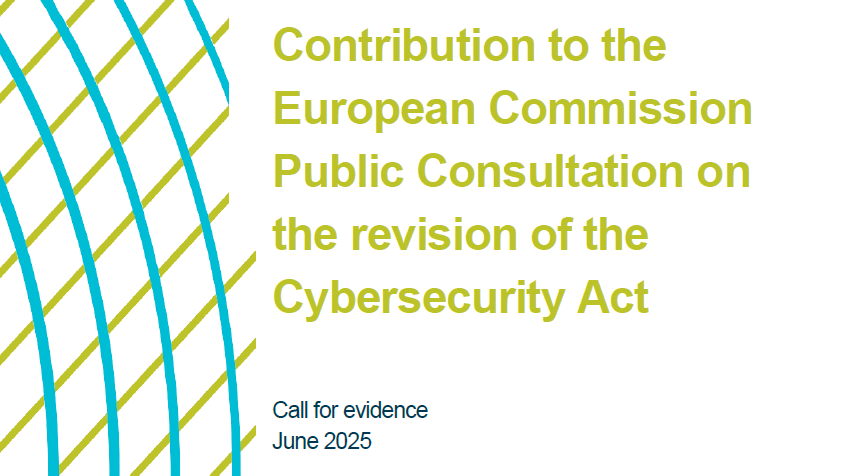Wolfgang Steinbauer, Head of Crypto & Security, NXP Semiconductors, explains how quantum computing has the potential to play a significant role in advancing our scientific knowledge and society in the coming decades, yet challenges the mechanisms we use today to secure information. This is why Charter of Trust Partners NXP, Infineon, and IBM are working on product solutions for a post-quantum future with long-term security.
By Wolfgang Steinbauer, Head of Crypto & Security, NXP Semiconductors
Security Threats Posed by Quantum Computing
Quantum computing will open up new fields of research and has the potential to play a significant role in advancing our scientific knowledge and society in the coming decades. However, its ability to instantly perform massive calculations also challenges the mechanisms we use today to secure information. Today, public-key and symmetrical key cryptography form the basics of encrypting and decrypting data and creating digital signatures. Very soon, at the rate that quantum computing is advancing, these security techniques are likely to be compromised.
Organisations involved in providing cryptographic services and semiconductor vendors, such as NXP and their Charter of Trust Partners Infineon and IBM, are keenly aware of the impact that quantum computing will have on the classic security techniques employed today. The industry is united to research and develop new cryptographic methods that are resistant to the capabilities that quantum computing provides. Termed post-quantum cryptography (PQC), it encompasses the study of new cryptographic algorithms and standards together with a migration path from existing cryptographic methods. Most importantly, PQC methods do not require a quantum computer to operate and utilise existing hardware platforms.
Quantum Supremacy Benchmarks
As in many fields of scientific research, the desire to stake claim to significant technology leaps has also shaped quantum computing innovations. Quantum supremacy is the term used to describe solving a complex equation with an early-stage quantum computer not possible using a conventional supercomputer. Quantum bits represent the basic element of information used in a quantum computer. One measure of the advancement in quantum computing is the computational power, measured in qubits. By the end of 2021, 100 qubit computers are already available for commercial research. However, industry opinion is that a 10,000 qubit system is required to compromise the widely used RSA-3072 public-key cryptographic algorithm. Nonetheless, the threat that quantum computing poses to established security algorithms in the coming decades is driving several critical PQC initiatives.
Post-Quantum Cryptography Essential to Futureproof Information Security
It might appear easy to overlook the extent to which we currently rely on public-key infrastructures such as RSA and ECC in our daily lives. Examples include using our smartphone for personal banking or investment transactions, the secure exchange of confidential medical records, and intelligent factory control systems. Other examples of potentially disruptive threats include circumvention of firmware upgrades in vehicles which might allow dangerous modifications to be installed to scenarios where one can retrospectively modify or forge digital signatures.
When it comes to developing a public-key infrastructure (PKI), the length of the key is an important metric. Long keys provide enhanced security but at the expense of the computational power required to compute with them. Although using long keys might not pose a challenge for a desktop computer, it does for a battery powered IIoT sensor. Consequentially, a key has a recommended length for a specific level of security. The USA’s National Institute of Standards and Technology (NIST) recommends PKI key length and the period of crypto protection. NIST and the German Federal Office for Information Security (BSI) play vital roles in fostering the innovation of new cryptographic standards for PQC. In 2016, NIST launched a competition inviting candidate algorithms suitable for PQC
The NIST PQC Competition
NXP as well as their Charter of Trust Partners IBM and Infineon are actively involved in the field of post-quantum cryptography and the standardization process. As part of this effort, NXP’s cryptographic experts have engaged with the NIST PQC standards process at an early stage. In 2020, NIST announced the finalist entrants in its PQC Competition, with two of the four key-exchange finalists co-authored by NXP security specialists.
With a long history of manufacturing semiconductor solutions used in security-based markets such as e-government, banking, and automotive, NXP is preparing to implement the new PQC standards once established. Already supplying semiconductor solutions based on current cryptographic PKI methods, NXP plans to offer customers a migration path for their products to the new standards. In addition to implementing the functional security techniques of PQC standards, NXP further believes more attention to logical and physical attack vectors are warranted.
During the NIST PQC process, the selection criteria included emphasis was the mathematical security and algorithm design. NXP security experts have delved deeper into the practical implementation aspects for each finalist candidate algorithm, with a particular focus on physical side-channel and fault attack vectors. A fault attack involves an adversary physically tampering with a device’s operation in an attempt to extract the secret key used. A side-channel attack covers a broad range of techniques based on analysis of how the device operates, including using information related to power consumption or electromagnetic radiation. NXP security consultants recently published a paper on their research and investigations of hardening the Kyber PQC algorithm; readers can access it here.
As the NIST PQC standard becomes ratified, work is already underway on their provisioning process. The first standardized post-quantum schemes are stateful hash-based signatures and involves a methodology process significantly different to those in use today. A transitional algorithm between current-day techniques and a quantum-resistance approach, the Commercial National Security Algorithm Suite (CNSA), uses traditional methods and larger key sizes. Many of NXP’s products already support CNSA.
Committed to a Post-Quantum Cryptographic Future
Quantum computing is emerging from innovation labs and being considered as a computing technology for some scientific research projects. However, it will be some time before the prospect of widespread deployment becomes a reality. Its contribution to society moving forward is hard to measure, but computer experts already predict it will be significant. That said, security specialists and information architects cannot underestimate the future threat it poses on our current widely used and standardized public-key infrastructure. Therefore, system designers will face many challenges transitioning their products to accommodate the new PQC standards.
Charter of Trust Partners have already made a significant contribution to the NIST PQC standards initiative and collaborated where such cooperation is permitted by compliance laws. NXP and Infineon co-submitted the NewHope scheme to the NIST standardization process (which made it to the second round) while NXP together with IBM co-submitted the Kyber algorithm for Quantum Safe Cryptography key-exchange, which is one of the finalist schemes.
It is now important that the industry works on products for a post-quantum future so customers can achieve long-term security in their products. Moving forward with the new standards will help ensure that the practical requirements of embedded security on resource-constrained devices, such as secure physical implementations, are fulfilled.
Image credit: rawpixel.com


You may also like

Charter of Trust Welcomes Zscaler
Zscaler is a leading cloud enterprise security provider helping global businesses accelerate their digital transformation by becoming more agile, efficient, resilient, and secure.
With Zscaler as a partner in the Charter of Trust, we aim to strengthen global cyber resilience through trust – by fostering actionable collaboration between industry leaders, governments, and public-private platforms. Zscaler brings robust expertise and innovation to the table, making it the ideal partner to drive this mission forward.
“Zscaler is excited to drive meaningful change alongside our new partners, laying a foundation of trust essential for successful digital transformation,” said Sam Curry, Zscaler CISO. “In today’s world, the need for reducing inherent trust and default access has never been greater. To truly stay ahead of ever-evolving threats, we must unite as a coalition of practitioners. Cyber attackers aren’t taking breaks, and with advancements like artificial intelligence, quantum cryptography, and emerging technologies on the horizon, collaboration is the key to securing the future.”
“We are proud to welcome Zscaler to the Charter of Trust. Their focus on cybersecurity innovation and commitment to openness reflect our shared ambition to create a safer, more resilient digital future. Together, we’ll strengthen trust, transparency, and security across the global digital landscape.” highlighted Dr. Summit Chada, Charter of Trust Co-Chair and COO Group Security & Business Lines CISO at Atos.
“With Zscaler as a Partner of the Charter of Trust, we believe that we can strengthen the global commitment to secure digital transformation by combining technological innovation with the Charter of Trust’s collaborative approach to cybersecurity leadership.” Ralf Schneider, Charter of Trust Co-Chair and Senior Fellow and Head of Cybersecurity and NextGenIT Think Tank at Allianz SE, welcomes Zscaler to the Charter of Trust.
We are excited to join forces and work together to advance digital trust and security across industries.

Contribution to the EU Commission Public Consultation on the revision of the Cybersecurity Act
We support Policy Option 2, which focuses on targeted regulatory measures that address key challenges without creating unnecessary complexity. In this context, we emphasize the need to enhance the role and resources of ENISA, to ensure effective implementation of both current legislation and the European Cybersecurity Certification Framework (ECCF).
Our recommendations aim to improve transparency, collaboration, and efficiency across the EU’s cybersecurity landscape. These include:
- Introducing clear timelines for the development of certification schemes.
- Enhancing stakeholder engagement throughout the process.
- Establishing more structured communication channels between ENISA, the Stakeholder Cybersecurity Certification Group (SCCG), and sectoral ISACs (Information Sharing and Analysis Centers).
We call for a stronger ECCF, one that is transparent, inclusive, and aligned with international standards to foster global interoperability and ease compliance for organizations across borders. Equally critical is the harmonization of certification practices across EU member states and the mutual recognition of certifications to minimize regulatory fragmentation.
The Charter of Trust advocates for technically robust, standards-based certification schemes, with well-defined roles and responsibilities. We also stress the need for clarity on the interplay between voluntary and mandatory certifications, particularly in relation to the upcoming Cyber Resilience Act (CRA).
To streamline compliance and reduce administrative burden, we propose a unified, risk-based incident reporting regime that consolidates requirements under regulations such as NIS2, CRA, GDPR, and DORA. This would not only simplify reporting for organizations but also enhance the EU’s overall cyber resilience. In addition, we recommend incorporating liability protections and grace periods for incident disclosure.
Finally, we urge the Commission to strengthen supply chain security by adopting a risk-based classification approach and establishing baseline cybersecurity requirements for ICT suppliers.
The Charter of Trust remains fully committed to supporting the European Commission in shaping a secure, resilient, and trusted digital future for Europe. We look forward to continued collaboration in building a cybersecurity framework that meets the needs of all stakeholders, today and in the years to come.




